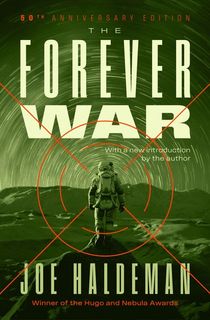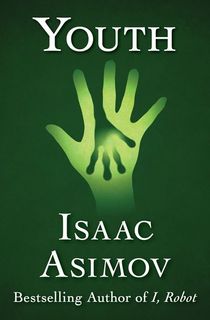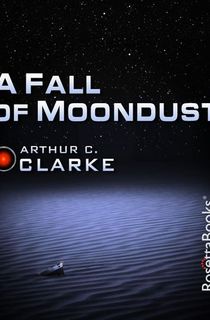Science fiction explores out-of-this-world elements and potential futures. This exploration can range from entirely speculative, to hard sci-fi grounded in actual facts.
However, there’s something special that happens when an author has a background in the scientific aspects of their novel. These 12 sci-fi books written by actual scientists harness each author’s expertise and personal experiences for a result that's imaginative and realistic—and most of all, a good story. Not only can you feel more confident that a scientist will nail the technical aspect of what it's like to survive in space or hack a mainframe, but scientists often approach problems in new and interesting ways.
If you're looking for a novel with a different style than your typical fare, try one of these science-driven sci-fi books.
12 Sci-Fi Books by Real Scientists

Zero Sum Game
S.L. Huang graduated from MIT with a degree in mathematics, and went on to work as a stunt performer and a firearms expert. She then combined all of those experiences and wrote her debut novel, Zero Sum Game, in which the protagonist’s superpower is math.
Cas Russell is scary good at math. Dodging bullets in a gunfight? No problem. Calculating how to use someone’s body size against them? Cake. And she’s willing to take any job if it pays well. When she discovers that a nemesis can manipulate people’s minds and make them do whatever they want, Cas wants to run. But she’s no longer certain that her thoughts are her own anymore.
From start to finish, the book and subsequent sequels are a riot to read. Huang brings her mercenary mathematician to vivid life with action sequences only a stunt performer could dream up, and a real-world application of math that will make any numbers-lover cheer.
Tense and fast-paced, the Cas Russell Series is a must for any reader who prefers thrills in their science fiction.

The Forever War
Immediately after receiving a bachelor’s in physics and astronomy, Joe Haldeman was drafted into the army. After he was wounded in combat, he used his war experience and education to create realistic military space opera stories.
The Forever War follows a physics student, Private William Mandela, as he is sent across time and space to face a fierce alien force while he rises through the ranks of the military. Mandela fights to survive and return home, but due to time dilation as an effect of space travel, he’s only aging years while Earth ages centuries.
It’s clear throughout the book that his experience in the Vietnam War shaped the military elements in the book, but the science behind time dilation is also influenced by Haldeman's understanding of physics. The realism woven throughout the layers of the novel breaks through typical military space opera tropes, giving the book a raw glimpse into what combat is actually like.

A Fire Upon the Deep
A Fire Upon the Deep was written by Vernor Vinge, a former professor of mathematics and computer science. While the Hugo-winning novel doesn't take place in the classroom (it's set across the Milky Way in the distant future), A Fire Upon the Deep does take an educator's interest in the mind's potential.
An individual's thoughts are largely defined in this story by their location in space. Limited minds dwell within the Unthinking Depths, while superintelligent entities buzz around the Transcend. How these partitions were made, however, is a mystery. The clashes between classes, as well as those between man and alien, define A Fire Upon the Deep, as one family of scientists merely try to survive such massive conflict.

Youth
Becoming a biochemistry professor wasn’t Isaac Asimov’s initial career choice. But after managing to get his PhD while also serving in the Army, that’s exactly what he did.
Asimov started writing short stories in 1939; and within three years of becoming a professor, he was making more money from writing than he was teaching.
Youth is a short story that appeared in Space Science Fiction Magazine in May 1952. It’s one of the few stories Asimov wrote featuring aliens, and the twist at the end leaves the reader with plenty to contemplate.
Two young boys, Red and Slim, find a pair of interesting creatures. They keep them in Red’s barn, and dream of turning their finds into a circus act. But when the boys overhear their fathers talking about a galactic opportunity, they realize the creatures are far more than they appear.

Machinehood
S.B. Divya received a degree in computational neuroscience, along with a master's in signal processing. Don’t worry, I had to look it up too.
Essentially, Divya's focus is a mix of physics, neurobiology, and electrical engineering. No wonder Machinehood, her latest sci-fi thriller, explores the intersection of technology and humanity with chilling implications and consequences.
Welga Ramirez is almost retired. An executive bodyguard with ex-special forces skills, it’s impossible that she’s watching her client get killed in front of her. Especially when death from violence is rare in 2095.
When Welga finds out the murder was done by a new terrorist organization intent on destroying humanity's ability to compete with artificial intelligence, she's determined to stop them. But to stop the Machinehood, she’ll have to go back to the government that betrayed her.
Machinehood has all the technology to make hard science fiction fans happy, combined with the tension and pacing of a spy thriller.

A Fall of Moondust
Arthur C. Clarke had a love of science from his youth. After serving in World War II, he received a degree in mathematics and physics. He enjoyed a unique career writing fiction, nonfiction, co-writing screenplays, working as a television commentator, and more.
A Fall of Moondust follows a prototype passenger ship designed to take tourists on Moon cruises. When it experiences a moonquake, they fall into a liquid-fine sea of moondust. Rescuers have to try and overcome the unpredictability of the lunar landscape before time runs out for the people aboard the ship.
Clarke brings taut psychological tension into this story by using nature as the antagonist. Because the science is blended with the action, it’s realistic but not overly technical, so the reader can focus on the characters and their plight.

Sleeping Giants
Sylvain Neuvel married his love of language and science when he obtained a PhD in linguistics. Neuvel's focus on word-morphology and computational morphology explains why his debut novel, Sleeping Giants, focused on humanity’s reaction to discovering an alien artifact.
When Rose Franklin was 11 years old, she fell into a hole and woke up in a giant metal hand. Seventeen years later, Rose returns to study the artifact as a physicist. She’s tasked with unraveling the code, but as her and her colleagues get closer to unlocking answers, they start questioning if they should.
Sleeping Giants is told through a series of interviews, documents, and journal entries. We follow Rose as she studies language to uncover secrets behind the artifact.
The result is a fast-paced book that will leave readers reaching for the sequel immediately.

Up the Walls of the World
Of all the scientists on this list, Alice Bradley Sheldon is the only one to hide her identity, writing under the pseudonym James Tiptree Jr. Tiptree was an intelligence officer in the army, and worked for the CIA before getting her PhD in experimental psychology.
Up the Walls of the World interweaves three storylines. On Earth, the military begins studying individuals who have demonstrated telepathic abilities. Meanwhile, on planet Tyree, aliens become aware of a creature intent on destroying their world.
In an attempt to communicate, the aliens try to project their thoughts to the creature, only to send the transmissions to Earth. The creature absorbs the minds of the aliens and humans, resulting in a connection that unlocks a new existence for them all.
Up the Walls of the World is an epic that dives into the psychological, militant, and governmental consequences of telepathy and communication. The focus is speculative, pushing the reader to consider how we can transcend the rigidity of society.

Contact
An astronomer, astrophysicist, cosmologist, planetary scientist, and astrobiologist, the late Carl Sagan was a scientist first, author second. Most of what he wrote was nonfiction, but he did actually write a novel on what alien contact might look like.
A radio signal reaches Earth. When the message is translated, scientists discover a missive as exciting as it is terrifying. The signal includes instructions to build a machine that will take one human to meet the beings who sent the message. They’ve been watching us, and want to meet us. But will they judge what they find?
Sagan believed it was impossible for us to be alone in this universe, so speculating on what that first encounter would be like is perfect for his foray into fiction.
The story takes us through the hard science of discovery, while also weaving political tension with personal stakes. Beyond the science, Sagan infuses his optimism and hope in what is ultimately an uplifting book.

Ninefox Gambit
After majoring in mathematics and receiving a master’s in mathematics education, Yoon Ha Lee wanted to explore how math enhances fiction. The result is his debut novel, a space opera where the entire structure of society is formulated and held together through math.
Kel Cheris is a disgraced captain. In order to redeem herself, she has to recapture a fortress taken by heretics. Her only hope is to rely on a brilliant tactician who isn’t quite dead. Since he never lost a battle, his experience is invaluable to Cheris. The only problem is, he went mad and massacred two armies––including his own.
As the siege advances, Cheris has to wonder if she can trust his advice, or if he’s determined to make her relive his own mistakes firsthand.
Readers who love hardcore military sci-fi will love the creativity and nuance delivered in Ninefox Gambit. It’s imaginative and complex, but the real fun is when mathematical heresies occur, unraveling the universe and warping physics itself.
Who knew math could be so much fun?

The Three-Body Problem
Written by Chinese computer engineer Liu Cixin, The Three-Body Problem begins a trilogy set against China's Cultural Revolution, where a secret military project establishes contact with aliens. It revolves around Ye Wenjie, an astrophysics graduate from Tsinghua University and is told in a series of flashbacks, flash-forwards, with the present mixed in for good measure.
The Three-Body Problem won the 2015 Nebula Award for Best Novel. Netflix later announced that former Game of Thrones showrunners David Benioff and D.B. Weiss would lead a streaming version of the story on its platform.

The Martian
Though Andy Weir worked as a software engineer, he also has a background in computer science. His love of science shines in his debut novel, The Martian, which Weir originally published online one chapter at a time.
Mark Watney was the first person to walk on Mars. And now he’s likely to be the first person to die there, too. When a dust storm strikes the surface, his crew has to leave quickly, and believe he’s dead. Alive but now stranded, Watney has to figure out how to communicate with Earth to get rescued. The only problem is his supplies are probably going to run out before that happens.
Stuck on an inhospitable planet, science is literally Watney's only hope in this accessible and scientifically accurate read.

Encounter with Tiber
Not only is Encounter With Tiber a sci-fi book written (or at least co-written) by a scientist, it's an astronaut book written by one of the first men to walk on the moon. Apollo 11 astronaut Buzz Aldrin and the Nebula Award-nominated author John Barnes teamed up to tell the story of Chris Terence, who finds evidence of extraterrestrial life.
This post is sponsored by Open Road Media. Thank you for supporting our partners, who make it possible for The Portalist to celebrate the sci-fi and fantasy stories you love.








